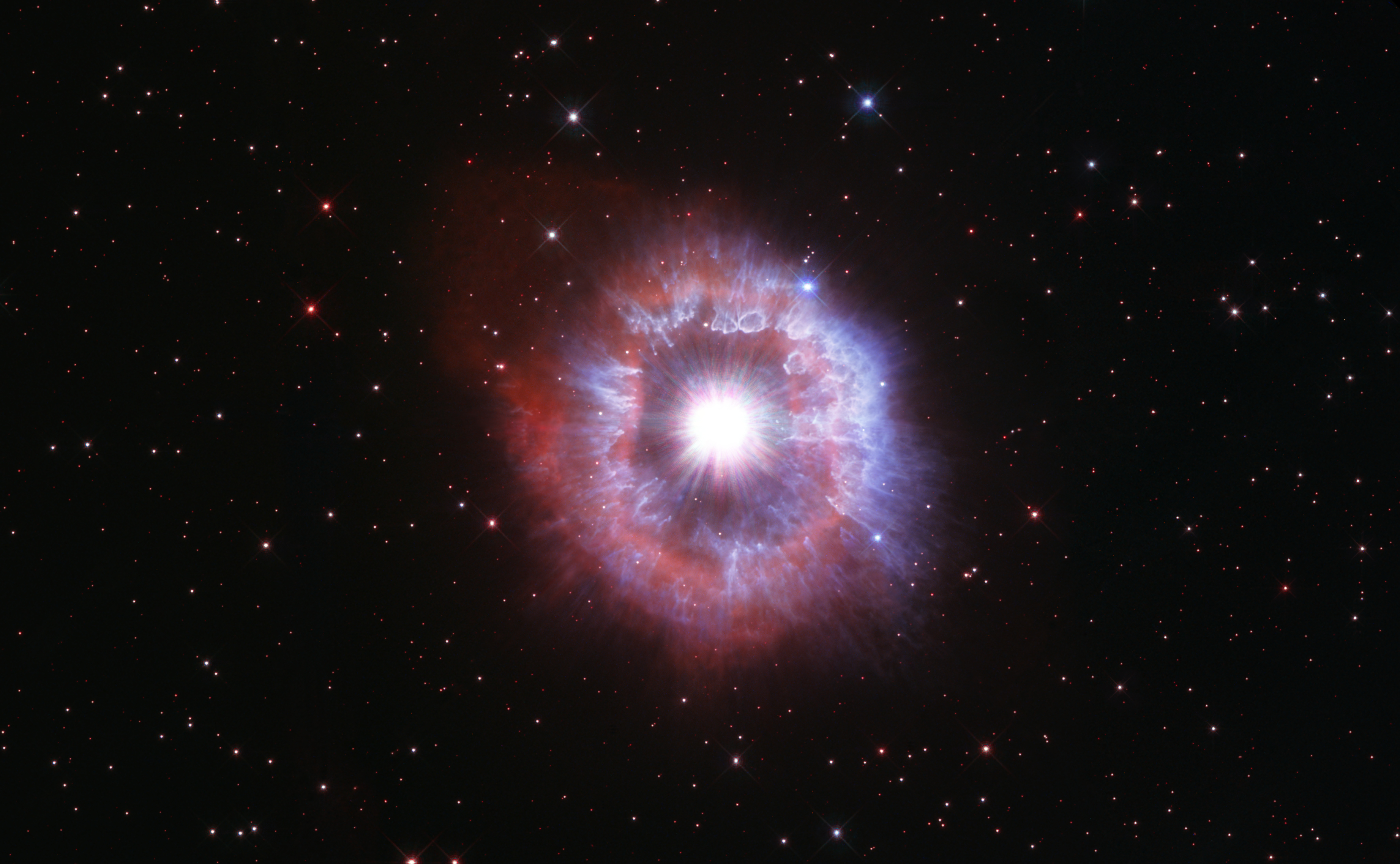
AG Carinae
The star AG Carinae is surrounded by an expanding shell of gas and dust. The nebula is about five light-years wide, which equals the distance from here to our nearest star, Alpha Centauri. The huge structure was created from one or more giant eruptions about 10,000 years ago, when our human ancestors were just beginning to farm. The star’s outer layers were blown into space—like a boiling teapot popping off its lid. The expelled material amounts to roughly 10 times our Sun’s mass. These outbursts are typical of a rare breed of star called a luminous blue variable (LBV). These stars are among the most massive and brightest stars known and live for only a few million years. AG Carinae resides 20,000 light-years away inside our Milky Way galaxy. The star’s expected lifetime is between 5 million and 6 million years. This image was taken to celebrate the Hubble Space Telescope's 31st anniversary. For more information, visit: hubblesite.org/contents/news-releases/2021/news-2021-017
